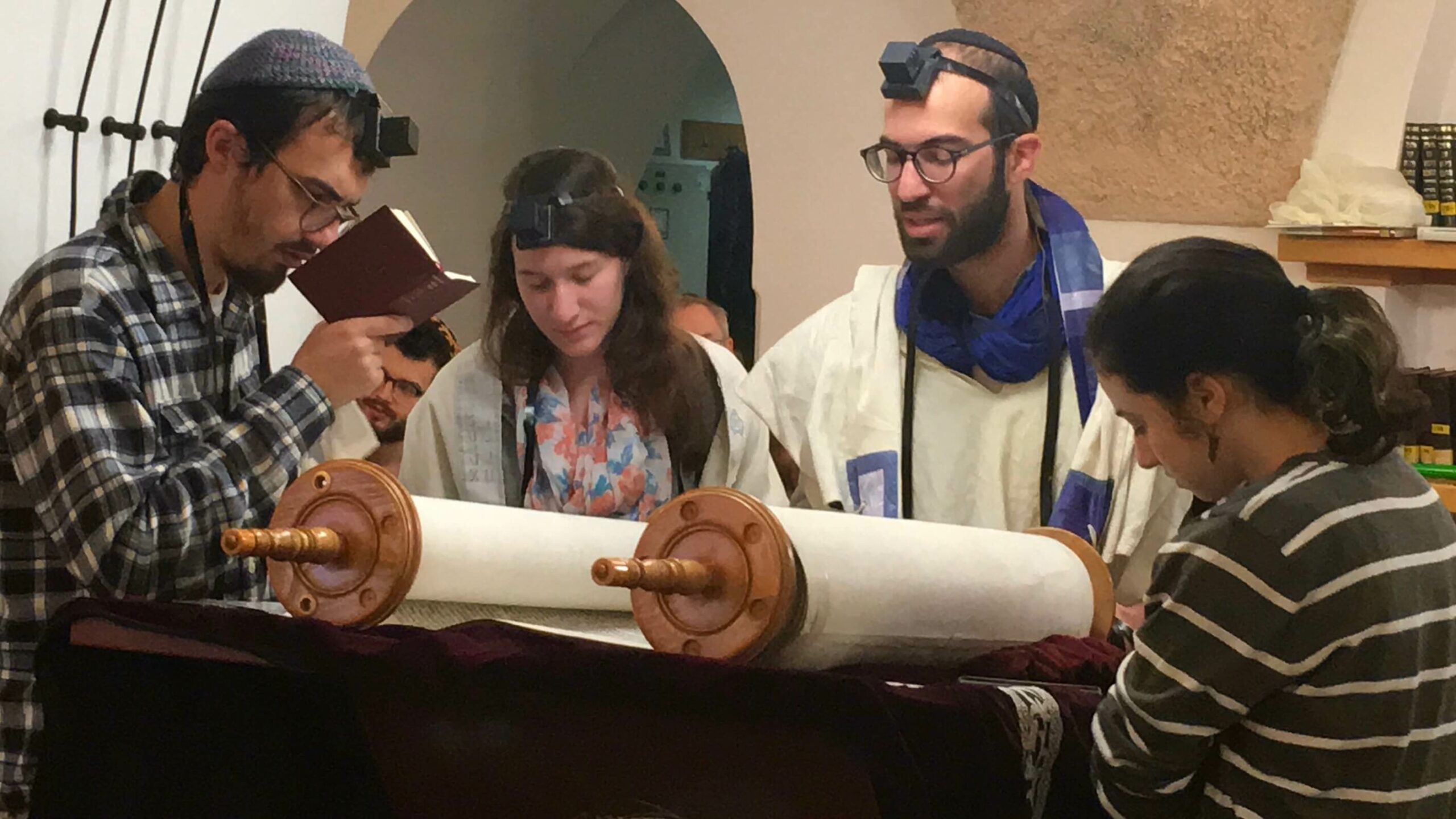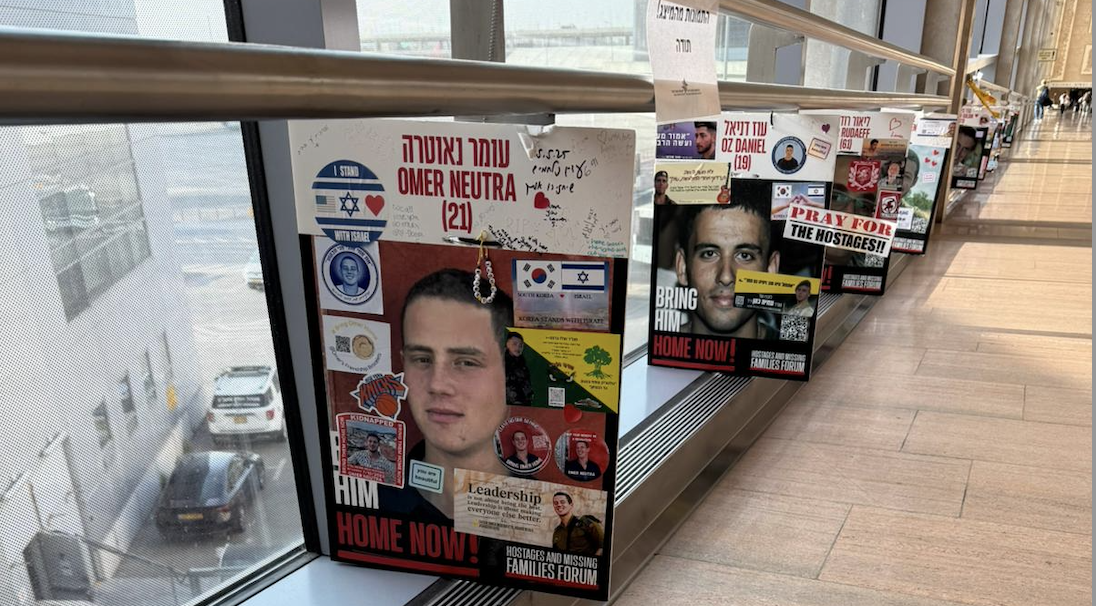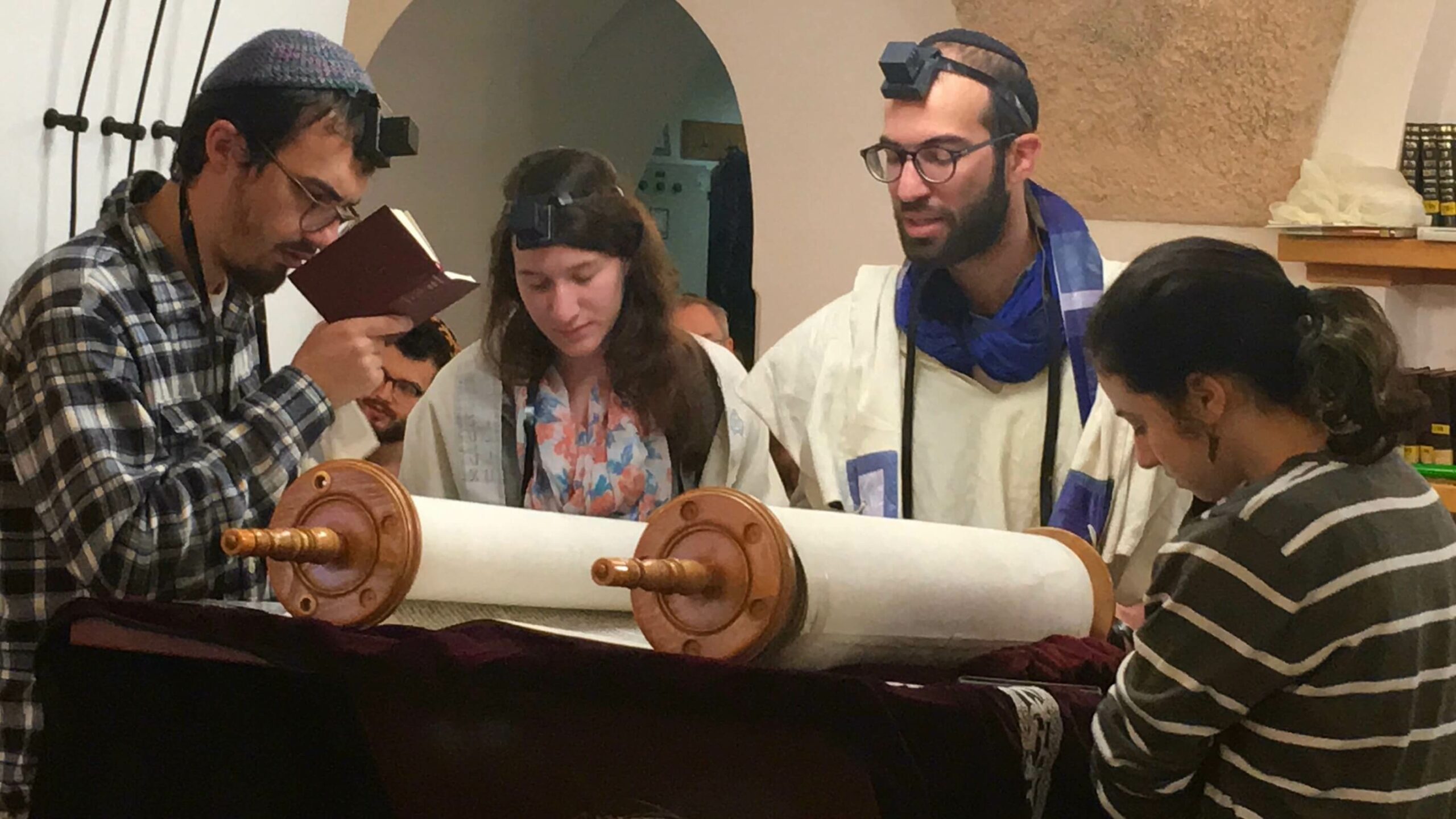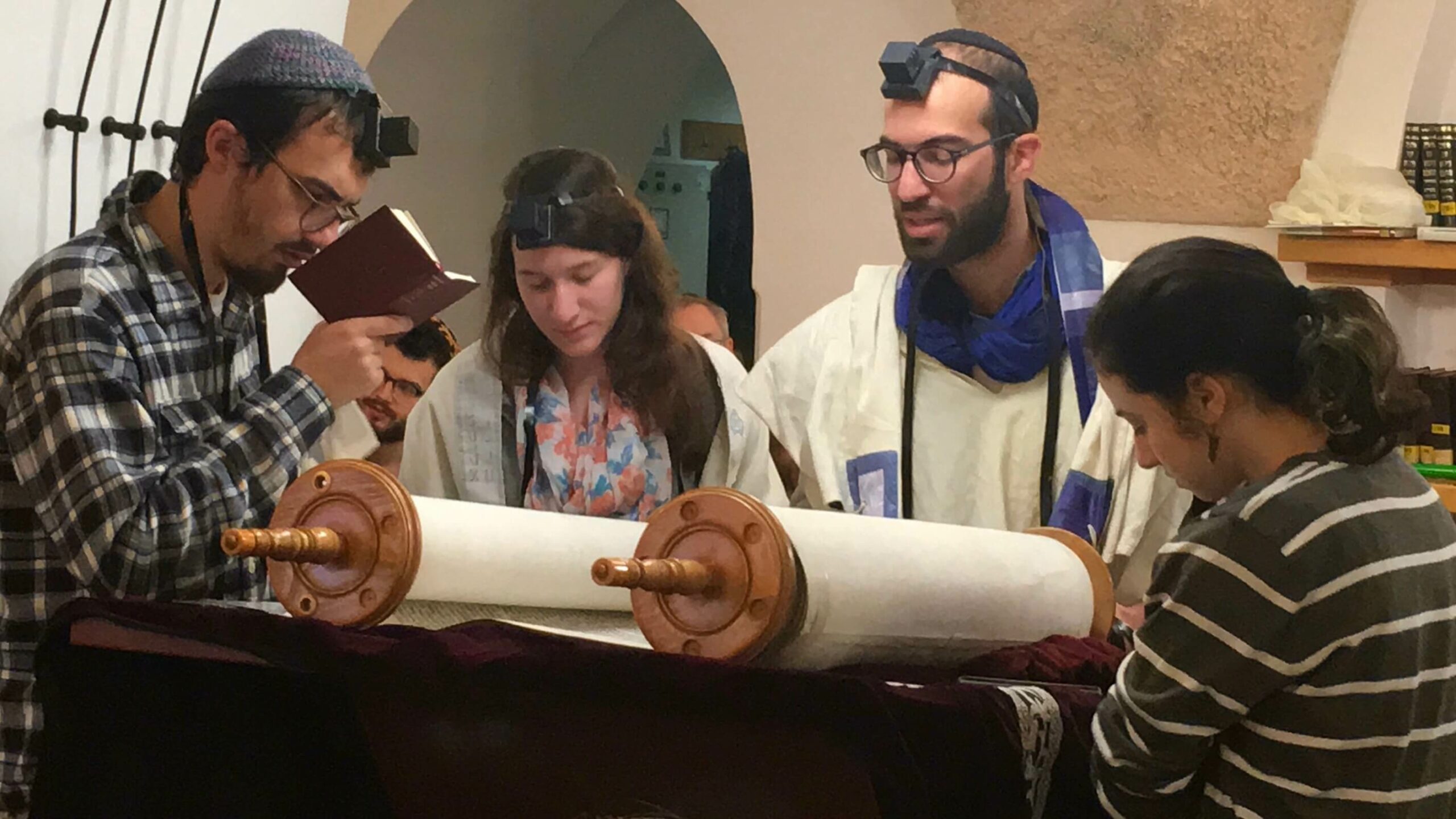

TORAH SPARKS (print friendly version)
Parashat Kedoshim May 11, 2019 | 6 Iyyar 5779
Annual (Leviticus 19:1-20:27): Etz Hayim p. 693; Hertz p. 497
Triennial (Leviticus 19:15-20:27): Etz Hayim p. 696; Hertz p. 500
Haftarah (Amos 9:7-15): Etz Hayim p. 706; Hertz p. 509
D’var Torah: The Holiness School
Rabbi Andy Shapiro Katz, CY Director of North American Engagement
Parashat Kedoshim starts in the middle of a section of the Torah that scholars refer to as the Holiness Code (H) – chapters 17 to 26. Most scholars treat these chapters as independent from P – what critical Biblical scholars call the Priestly source. Incorporated together into Leviticus, they together profess the conception of holiness as involving both the ritual and the ethical.
Professor Israel Knohl, in his work, “The Sanctuary of Silence: The Priestly Torah and the Holiness School” argues that the “Holiness School,” those ancient authors who composed these chapters of Leviticus, is responsible for the idea that mitzvot are the individual and national pathway to holiness.
At the most basic level, holiness is an elevated separateness. But when we look closely there is only one thing that is inherently holy – God – while everything else becomes holy. But among those things that become holy, some of them are only temporarily holy while others remain holy forever.
Knohl points out when God, the source of holiness, is present somewhere, that place becomes holy. And when a place is holy, it is either completely off limits to human beings or only accessible to those who’ve made the necessary preparations – removing their shoes, bathing, putting on special garments, bringing special offerings, etc. But when God’s presence departs, the place reverts to its original status.
God dwelled in the Mishkan, the Tabernacle that first wandered with the Israelites in the wilderness and was later erected in various part of Canaan, but those places were no longer holy after the Mishkan was disassemble and God’s presence, departed. In contrast, we treat the Temple Mount, and by extension all of Jerusalem, as eternally holy because the First and Second Temples once stood there.
According to the Priestly source, people can also acquire “elevated separateness.” In the case of the kohanim, initially a ritual endowed them with holiness, but henceforth their holiness is eternal, passing through the father’s line. That is why, hundreds of years after the destruction of the Temple, kohanim are still prohibited from entering cemeteries. In contrast, the Nazirite is only holy – and must likewise avoid corpses – temporarily. Once a Nazirite shaves his or her head, ending his or her term as a Nazirite, none of the prohibitions apply.
The Jewish people’s relationship to holiness seems to reflect both of these notions. God set us apart, gave us a holy Torah whose laws we are to observe, and a holy land in which to dwell. The holiness of both the Torah and the land seem to be permanent, so perhaps our holiness is permanent as well. But the first verse in our parashah says: “You shall be holy, for I, the LORD your God, am holy.” (VaYikra 19:2). God does not say: “You ARE holy.” Rather, you shall be holy…as long as you do God’s mitzvot. As we say with every blessing we recite before performing a mitzvah: “Asher kid’shanu b’mitzvotav” – who made us holy though his commandments. We are not holy because God gave us the mitzvot. We BECOME holy through doing them. And when we do not, we are no longer holy. We become like everyone else.
But whereas the Priest’s holiness stems from, and primarily pertains to, the ritual activity in the Mishkan/Mikdash, the holiness of the “Nation of Priests and a Holy People” is ALSO rooted in ethics. That, says Knohl, is the natural byproduct of opening up holiness to the entire nation and not just a particular caste. And this is the unique contribution of the Holiness School, not only to the Priestly source in the Torah, but to the Jewish people, and ultimately the world.
Parashat Kedoshim Self-Study
Vered Hollander-Goldfarb, Conservative Yeshiva Faculty
This parashah is a concentration of Mitzvot (commandments) from many spheres of life. We will look at a few of them.
1) Unlike most instructions that Moshe teaches, this Parasha is specified as having been told to the entire congregation (19:2). What message does the Torah send by teaching a Parasha loaded with legal material to everybody, not only to the experts?
2) Among the first Mitzvot (19:3) we are commanded to be in awe of our mother and father, and observe Shabbat. What might be the possible connection that would place these two together?
3) When we enter the land and plant trees, we may not use the fruit grown in the first 3 years. In the fourth year, the fruit is to be used to praise God, and from the fifth year it may be eaten without restrictions (19:23-25.) Why do you think these restrictions were imposed?
4) We are warned to have righteous measures and scales (19:36). The verse ends with a reminder that ‘I am the LORD your God that too you out of the land of Egypt.’ What might be the connection between the two parts of the verse?
5) Three times in the Parasha (19:31, 20:6, 27) we are warned against turning to or having in us a ghost or a familiar-spirit. Why do you think that the Torah is so strongly opposed to these practices? Note that it does not ridicule the practices as being false.
D’var Haftarah: No Pebble Shall Fall to the Ground
Rabbi Mordechai Silverstein, Conservative Yeshiva Faculty
Amos is the earliest of the literary prophets. He was a shepherd from Tekoa in Judea, the southern kingdom, who prophesied largely about the sins and downfall of Israel, the northern kingdom. It was his expectation that the northern kingdom would fall and its people would be scattered among the nations on account of their sins. Among his most famous images was God scattering the people among the nations using a sieve to separate out the righteous from the wicked: “For I am about to command, and I shall shake up the House of Israel in all the nations as one shakes in a sieve and no pebble shall fall to the ground.” (9:9)
The metaphor of the sieve is intended to describe the exile experience. The righteous will be winnowed from the wicked in preparation for the redemption. The whole purpose of a sieve, then, is to separate out that which should be saved from that which is waste. Sometimes, one separates out the good, leaving it in the sieve while letting the waste fall to the ground and sometimes the opposite is the case. Amos’ message does not make clear in his prophecy which was his intention and, in consequence, commentators are divided on this question.
The following 8th century C.E. midrash presents one vision of what this prophecy might look like: “Happy are Israel! Even though they are wearied having to dwell in the four corners of the earth – to the north and to south, to the south and to north, to the east and to the west, to the west and to east, they are still at the center [of God’s concern], as it says: For I am about to command, and I shall shake up the House of Israel in all the nations (Amos 9:9). Had this verse gone on to say, “and the pebble shall fall to the earth,” my heart would be broken within me and all my bones would grow weak. I would have said: When a pebble falls to the earth, in the nature of things it is lost. But when the text says, ‘no pebble shall fall to the ground (ibid.): Just as this pebble moves back and forth in the sieve and in the end remains in the center, so, too, Israel, may I make atonement for them! … are at the center [of God’s concern]. (Eliyahu Rabbah 5 – Ish Shalom ed. p. 25)
This midrash views exile as a frightening experience. It is easy to get lost both spiritually and physically when you are not at home. It is easy to feel and to be forgotten. The author of this midrash seeks to reassure its readers that despite the fact that they might not feel “cared for” because they are not at home, not in the center of things, that they are being “tossed around” in the sieve, God will ensure that they are at the center of His sieve and are not forgotten about.
These days such a message may sound “ethnocentric” and, consequently, out of vogue in some circles. However, people with strong self-identity naturally want to preserve that identity and do not want to be swallowed up and lost among undifferentiated masses. This midrash shores up Jewish identity, even at a moment in history when it is a struggle to do so, reminding us that God will give Israel the strength to remain a people.








